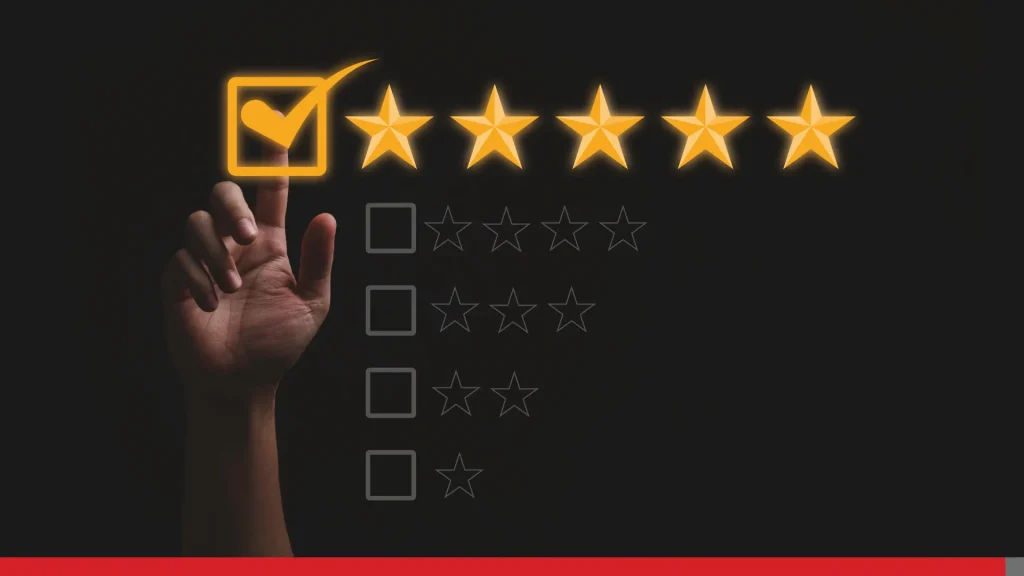As a business owner of any scale, staying on top of all the daily tasks is a milestone on its own.
When focusing on your online reputation, though, you have to be extra careful and invest more time into ensuring that you’re heading in the right direction.
This article will explore some tips for you to follow in your next endeavours in the online world.
How Can I Monitor My Online Reputation?
The importance of monitoring your online presence is huge, and the benefits are endless.
At EasyHosting, we shared ‘why’ you need to be on top of your online reputation and offered some advice you won’t find easily.

In this section, we’ll delve into how to monitor it and reach all the fantastic benefits it offers you.
For eCommerce owners, maintaining a positive online reputation is crucial. But keeping your public profile at bay applies to every online profession.
Online reviews are crucial for the survival and success of various entities, including blogs, news websites, and small businesses. They serve as a means to maintain relevance and guarantee the delivery of exceptional content and services to their target audience.
More than 95% of buyers online will sometimes check for online product reviews.
For small businesses, this impact is more significant because, unlike big corporations, they often rely heavily on word-of-mouth and local reputation.
Tips on Online Reputation Monitoring
Positive reviews can boost a small business’ credibility and draw in more customers, so ensure you’re on top of your reputation by following simple tactics like the ones described below.
1. Set Up Google Alerts
Google Alerts is a great tool to receive real-time notifications whenever your brand or relevant keywords are mentioned online.
It’s important to keep track of ongoing discussions and promptly address any issues that arise. However, keep in mind that when a notification pops up, you must take the necessary actions and organize the information to cater to your requirements.
2. Monitor Social Media Channels
We assume that you have established a presence on social media. If not, consider creating accounts on the most popular platforms in your region, like Facebook or Instagram.

The next step is to regularly track mentions of your brand on social media platforms. Social listening tools can help you keep tabs on conversations, respond to comments, and address concerns swiftly.
3. Encourage Positive Reviews
Actively engage with satisfied customers and encourage them to leave positive reviews. Positive reviews not only enhance your online reputation but also counterbalance any negative feedback.
Small business owners can benefit from offering a discount to customers who share their experience by leaving a review after purchasing a product. This approach can be a smart way to incentivize repeat business and increase customer engagement.
4. Address Negative Feedback Promptly
Respond quickly and professionally to negative reviews or comments.
Negative feedback is also a great opportunity to acknowledge the concern, offer a solution, and demonstrate a commitment to customer loyalty and satisfaction.
5. Optimize Your Website
Every business and organization needs a swift website; this means having a great web host on your side as you grow.
Confirming that your website provides accurate and up-to-date information about your business. Optimize your site for search engines to control the narrative and present a positive online image, or let the host optimize the website for you.
Search Engine Assist, for instance, ensures your website performs admirably on search engines and showcases how you compare against the competition.
6. Do All of The Above With Us!
At the top of our toolbox is Reviews Promoter, a service specifically designed to make digital marketing a dream for people just starting out.
Reviews Promoter not only helps you collect all the relevant information about your brand from online sources but also utilizes social tools to boost customer engagement. With our assistance, you can showcase your exceptional business practices to a wider audience and demonstrate your commitment to providing top-notch services.
Think only once when opting for an online reputation management tool, which can solidify your brand reputation among your competitors.
7. Engage in Online Communities
It’s a good idea to engage in online communities and forums that are relevant to your interests. You can start by exploring Facebook groups or even creating your own. Look for people who share similar interests and share your work to get noticed.
Be proactive in addressing questions or concerns related to your brand, showcasing your commitment to customer satisfaction.
8. Regularly Update Social Profiles
Keep your social media profiles updated with accurate information, including contact details and business hours. Incomplete or outdated profiles can lead to confusion and negatively impact your online reputation.
9. Monitor Competitor Activity
One of the most underestimated things is checking out what your competitors are doing at any given time.
Our recommendation is quite simple.
Create a new browser profile and name it competitor analysis. Then, check out their social media accounts, blogs, and overall digital presence. Make notes as you go and see whether you can incorporate some of that data into your own business flow.
Also, understanding their strategies can help you identify potential threats and opportunities to differentiate your brand.
10. Educate Your Team
A great tip for mid-sized businesses is to make sure that your team is trained on the importance of online reputation management.
Consider setting up training sessions with industry experts or colleagues to educate your employees on specific business-centric tasks and ideas. This will equip them with the necessary knowledge and skills to respond effectively when needed.
Equip them with guidelines on how to represent the brand online and respond to customer feedback.
11. Consistent Brand Messaging
One of the key aspects of building a strong brand identity is maintaining a consistent brand voice and messaging across all online channels. Consistency helps establish trust and reinforces a positive brand image in the minds of your audience.
Creating a brand template or guide that perfectly aligns with your brand image can be incredibly helpful in achieving this consistency.
A brand guide can include guidelines on your brand’s tone, language, visual style, and other important elements that can help ensure that every piece of content you produce stays true to your brand identity.
With a brand guide in place, you can work more effectively on new material, knowing that it will align with your established brand voice and messaging.

Conclusion: Our Best Tips Yet!
We hope you found those tips helpful. These are some of the tried and tested strategies that you definitely want to keep in your back pocket.
Remember, running a business is no easy feat, but you can make it a lot easier on yourself with the right tools and resources. And that’s exactly what we’re here for! We’ll be sharing more exciting topics, tips and tricks that will help you take your business to new heights.
So, stay tuned and always remember to come back to EasyHosting for all your business needs!
Get in touch with us!
Call us: 1-888-390-1210

